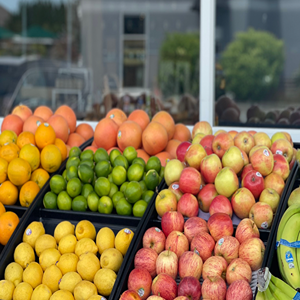Understanding how to properly wash and clean produce may seem like a simple task, but using natural methods to wash fruits and vegetables can help eliminate harmful pesticides, dirt, and bacteria, ensuring the safety and quality of the food we consume.
Take these extra moments to clean your produce naturally.
Before washing, sort through your produce to remove any spoiled items. Set up a clean sink or basin, a vegetable brush, a colander, and, fresh, cool, running water.
Rinse Thoroughly under Running Water
Begin by rinsing the produce thoroughly under cool, running water to remove dirt, surface residues, and some pesticides from the produce's surface.
Use a Vegetable Brush for Firmer Produce
For firmer produce like potatoes, carrots, beets, or apples, use a vegetable brush to remove any dirt or debris that might be deeply embedded. Firmly but gently scrub the surface of these produce items under the running water.
Pay Attention to Leafy Greens and Cabbage Family
Vegetables like lettuce, spinach, kale, or cabbage, which have layered leaves, require extra attention during washing. Separate the leaves and rinse under running water, gently rubbing them to remove any dirt or sand that may be trapped. Be thorough while washing these types of produce to ensure all layers are clean.
Vinegar Solution for Leafy Greens and Berries
To eliminate bacteria or pesticides that may be lingering on leafy greens or berries, preparing a vinegar solution can be effective. Mix one-part white vinegar with three parts water in a clean bowl or basin. Soak the produce in this solution for about 15 minutes, then thoroughly rinse under cool running water. The diluted vinegar acts as a natural disinfectant, enhancing the cleanliness and safety of your produce. Avoid soaking the berries or leaving them immersed in water for an extended period to prevent waterlogged texture.
Air Dry or Pat Dry
Once you have finished rinsing and cleaning the produce, it is essential to allow them to air dry or pat them dry with clean paper towels. Drying helps remove excess water, preventing bacterial growth and maintaining crispness. Avoid drying produce with cloth towels, as they may carry bacteria or residues.







